
Cebu: The Queen City of the South
Discover Cebu: A perfect blend of history, culture, and natural beauty, offering pristine beaches, historic landmarks, and culinary delights in the heart of the Philippines.
Cebu, known as the Queen City of the South, is a vibrant and bustling destination in the Philippines. Rich in history and culture, this island province offers tourists a unique blend of urban excitement and natural beauty. From centuries-old Spanish colonial churches to modern shopping malls, Cebu has something for everyone. The island is famous for its beautiful white-sand beaches, crystal-clear waters, and diverse marine life, making it a haven for beach lovers and diving enthusiasts. The nearby islands of Mactan and Malapascua are particularly popular for their pristine beaches and excellent dive sites. For those interested in history, Cebu City’s Magellan's Cross and the Basilica Minore del Santo Niño are must-visit landmarks that tell the story of the island’s rich past. Foodies will delight in Cebu’s culinary offerings, especially the famous Cebu lechon, a succulent roast pig that is a must-try. The city also boasts a vibrant nightlife, with numerous bars, clubs, and entertainment venues to choose from. Whether you're looking for adventure, relaxation, or a bit of both, Cebu promises a memorable experience for every traveler.
Local tips in Cebu
- Visit during the Sinulog Festival in January for a colorful cultural experience.
- Try the local delicacy, Cebu lechon, at one of the many food markets.
- Take a day trip to Kawasan Falls for a refreshing swim in turquoise waters.
- Hire a local guide for diving trips to get the best experience and see diverse marine life.
- Use local transportation like jeepneys and tricycles to get around cheaply and conveniently.
Cebu: The Queen City of the South
Cebu, known as the Queen City of the South, is a vibrant and bustling destination in the Philippines. Rich in history and culture, this island province offers tourists a unique blend of urban excitement and natural beauty. From centuries-old Spanish colonial churches to modern shopping malls, Cebu has something for everyone. The island is famous for its beautiful white-sand beaches, crystal-clear waters, and diverse marine life, making it a haven for beach lovers and diving enthusiasts. The nearby islands of Mactan and Malapascua are particularly popular for their pristine beaches and excellent dive sites. For those interested in history, Cebu City’s Magellan's Cross and the Basilica Minore del Santo Niño are must-visit landmarks that tell the story of the island’s rich past. Foodies will delight in Cebu’s culinary offerings, especially the famous Cebu lechon, a succulent roast pig that is a must-try. The city also boasts a vibrant nightlife, with numerous bars, clubs, and entertainment venues to choose from. Whether you're looking for adventure, relaxation, or a bit of both, Cebu promises a memorable experience for every traveler.
When is the best time to go to Cebu?
Iconic landmarks you can’t miss
Magellan's Cross
Explore Magellan's Cross, a historical landmark in Cebu City that marks the arrival of Christianity in the Philippines, and immerse yourself in its rich cultural heritage.

Temple of Leah
Discover the stunning Temple of Leah in Cebu, a monumental tribute to love with breathtaking views and architectural grandeur.

Minor Basilica of the Holy Child of Cebu (Basilica Minore Del Sto. Niño de Cebu)
Explore the historical Minor Basilica of the Holy Child of Cebu, the oldest Catholic church in the Philippines, rich in culture and spiritual significance.

Fort San Pedro
Uncover the historical charm of Fort San Pedro in Cebu, a captivating museum and fortress showcasing the rich heritage of the Philippines.
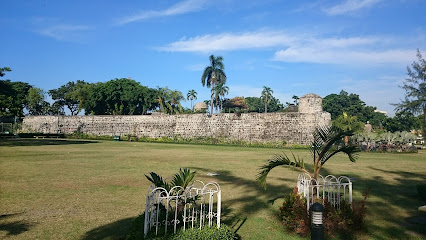
TOPS Cebu
Experience unparalleled panoramic views of Cebu City and beyond at TOPS Cebu, a must-visit observation deck in the heart of the Philippines.
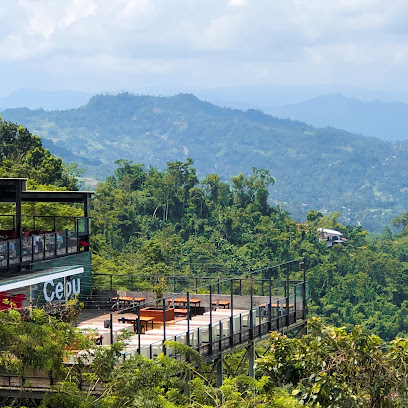
Sirao Garden
Discover the breathtaking beauty of Sirao Garden in Cebu, where vibrant flowers and stunning landscapes create a perfect escape from the city.
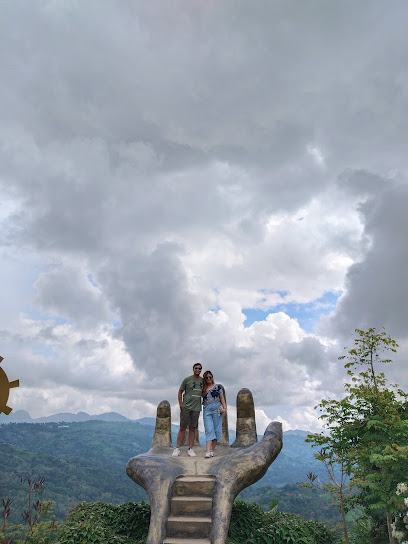
Yap-San Diego Ancestral House
Discover the rich cultural history of Cebu at the Yap-San Diego Ancestral House, a remarkable blend of Filipino and Chinese heritage.
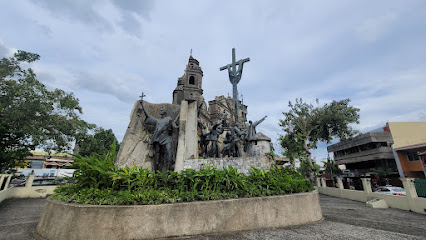
Plaza Independencia
Discover the historical charm and lush beauty of Plaza Independencia, Cebu City's serene park that celebrates Filipino heritage and community spirit.

Casa Gorordo Museum
Explore the rich history and cultural heritage of Cebu at Casa Gorordo Museum, a beautifully preserved Spanish colonial landmark.
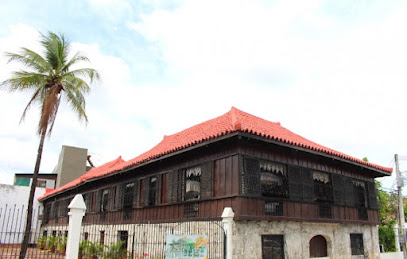
Cebu Provincial Museum
Discover Cebu's rich history and vibrant culture at the Cebu Provincial Museum, a must-visit for every traveler exploring the Philippines.
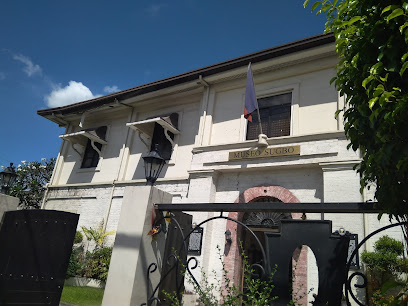
Heritage of Cebu Monument
Explore the Heritage of Cebu Monument, a vibrant showcase of Cebu's rich history and culture, nestled in the heart of the city.
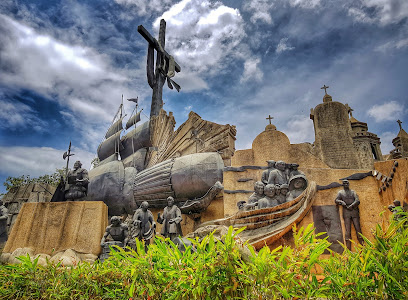
National Museum of the Philippines - Cebu
Explore the National Museum of the Philippines in Cebu, a cultural treasure trove showcasing rich history, art, and unique biodiversity of the region.

Cebu Provincial Capitol
Discover the regal beauty and historical significance of Cebu Provincial Capitol, a must-see landmark showcasing the province's rich governance and cultural heritage.
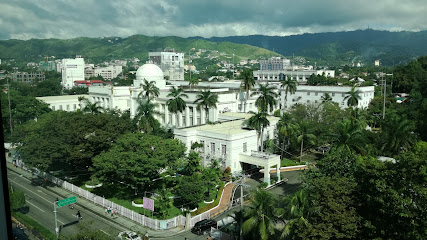
Colon Obelisk
Discover the historical significance of the Colon Obelisk in Cebu, the gateway to the oldest street in the Philippines, rich in culture and heritage.
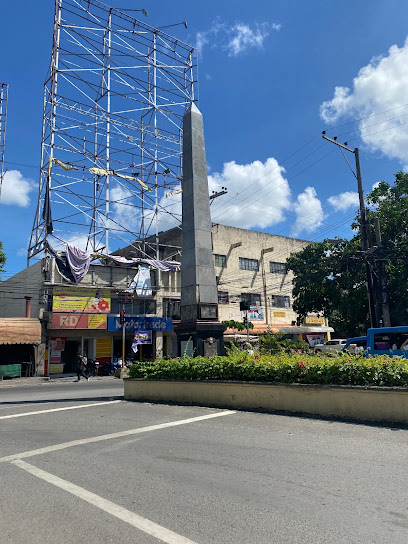
Miguel López de Legazpi Monument
Explore Cebu City's rich history at the Miguel López de Legazpi Monument, a tribute to Spanish colonization and cultural heritage in the Philippines.
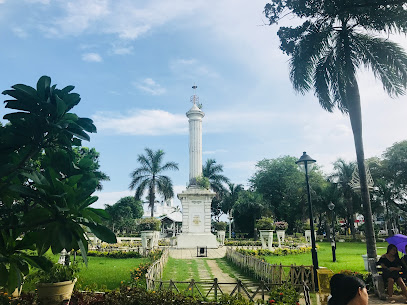
Unmissable attractions to see
Taboan Public Market
Explore the vibrant Taboan Public Market in Cebu City, where local flavors and culture come alive in a bustling atmosphere.
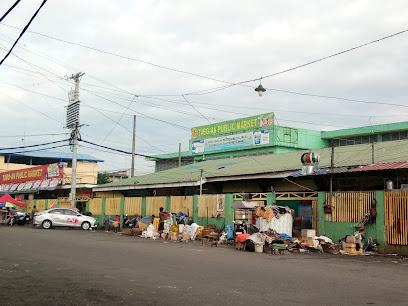
Taboan Public Market
Explore Taboan Public Market: A vibrant hub of fresh produce, local delicacies, and unique souvenirs in Cebu City, Philippines.
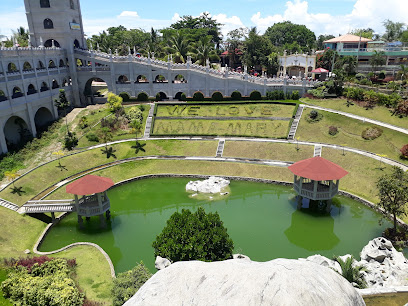
City Time Square
Explore City Time Square in Mandaue City, Cebu - a vibrant outlet mall for shopping, dining, and entertainment experiences that cater to every taste.
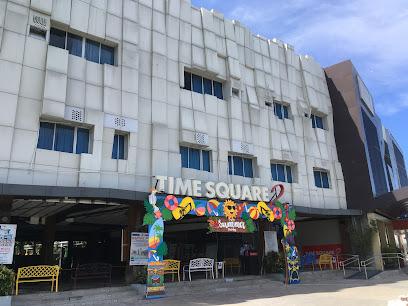
Sky Experience Adventure
Discover the thrill of adventure and stunning views at Sky Experience Adventure, a top amusement center in Cebu City.
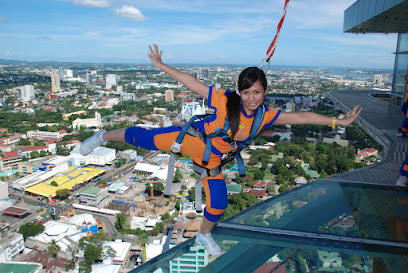
Sirao Garden-Little Amsterdam
Explore Sirao Garden, Cebu's Little Amsterdam, a colorful community garden bursting with vibrant flowers and breathtaking views, perfect for nature lovers and photographers.
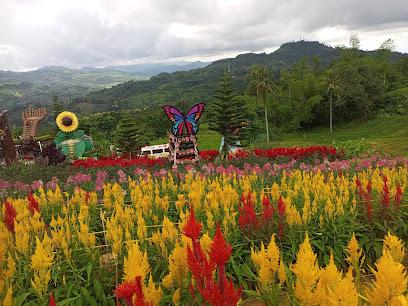
Terrazas de Flores Botanical Garden
Explore the colorful landscapes of Terrazas de Flores Botanical Garden, a tropical paradise in Cebu City, where nature's beauty unfolds in vibrant terraces.
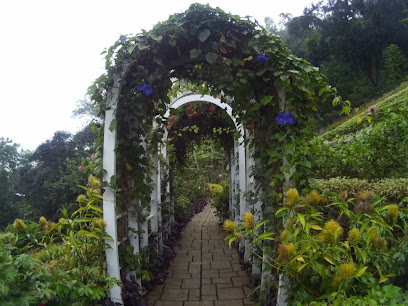
National Museum of the Philippines - Cebu
Explore the National Museum of the Philippines - Cebu to uncover the artistic and cultural treasures that define the nation's rich history and heritage.
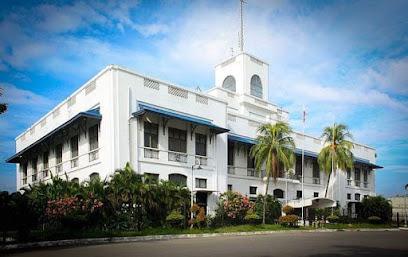
The Cube - SM Seaside
Discover the architectural wonder of The Cube at SM Seaside, where shopping, dining, and entertainment converge in the heart of Cebu.
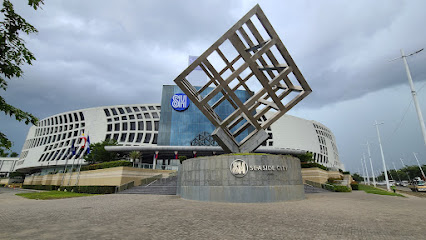
University of San Carlos Museum
Discover the cultural richness of the Philippines at the University of San Carlos Museum in Cebu City, where history and art come to life.
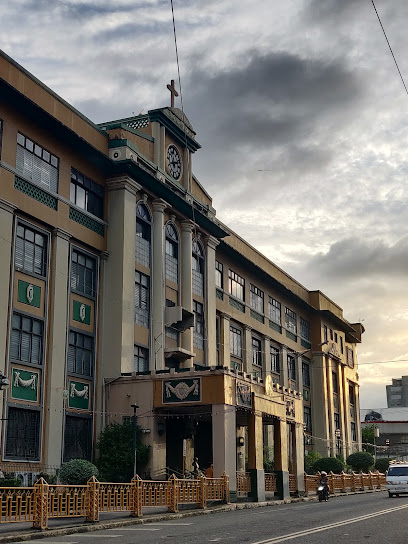
Crocolandia
Experience the thrill of Crocolandia in Talisay, Cebu, where adventure and wildlife conservation come together in an unforgettable tour.
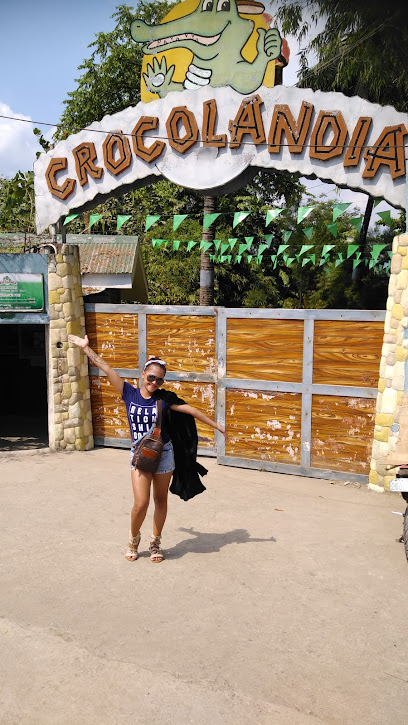
Sudlon National Park
Explore Sudlon National Park, a serene escape near Cebu City, ideal for nature lovers and adventure seekers amidst stunning landscapes and rich biodiversity.

Jumalon Butterfly Sanctuary And Art Gallery
Experience the magical blend of butterflies and art at Jumalon Butterfly Sanctuary, a unique haven in Cebu City perfect for nature enthusiasts and art lovers.
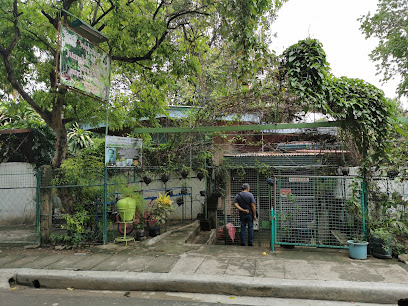
Manipis Viewing Deck
Discover the stunning landscapes of Cebu at Manipis Viewing Deck, a picturesque viewpoint perfect for nature lovers and adventure seekers alike.

1730 Jesuit House
Explore the 1730 Jesuit House, an architectural marvel and historical museum in Cebu City showcasing the rich cultural heritage of the Philippines.
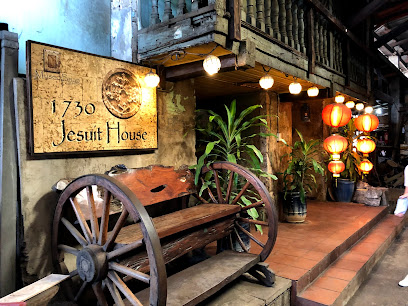
Budlaan Falls
Explore the breathtaking Budlaan Falls in Cebu City, a serene retreat known for its stunning cascades and lush surroundings, ideal for adventure and relaxation.
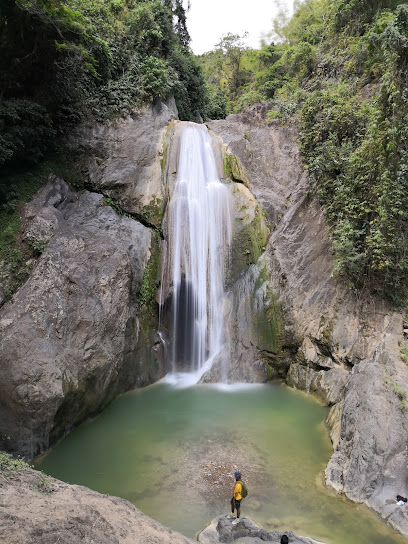
Essential places to dine
La Vie Parisienne
Experience the taste of France in Cebu at La Vie Parisienne – where culinary artistry meets delightful ambiance.
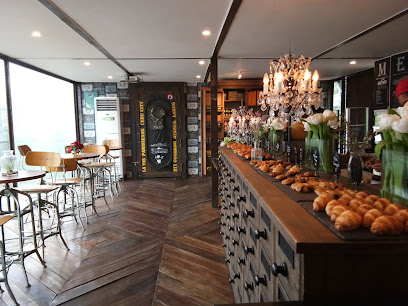
House of Lechon
Discover Cebu's culinary treasure at House of Lechon – where every bite tells a story of rich Filipino flavors.

Top of Cebu
Discover authentic Filipino flavors at Top of Cebu while enjoying breathtaking views over the city.
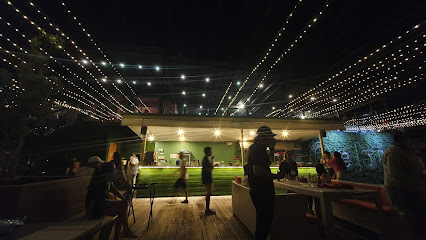
Lantaw Il Corso
Discover authentic Filipino flavors at Lantaw Il Corso while enjoying stunning ocean views along Cebu's beautiful coast.
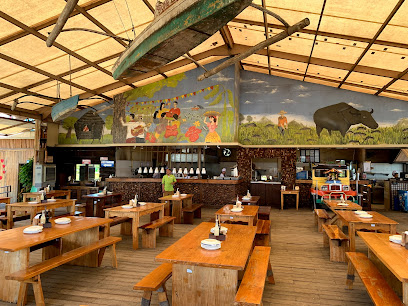
Casa Verde
Experience authentic Filipino cuisine at Casa Verde in Cebu City – where flavor meets tradition in a welcoming atmosphere.
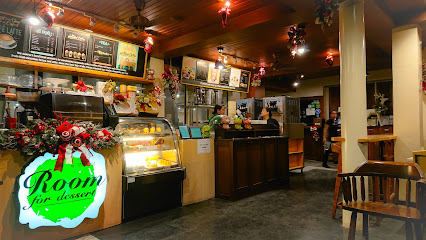
Acacia Steakhouse
Experience culinary excellence at Acacia Steakhouse in Cebu City, where premium steaks meet warm hospitality.
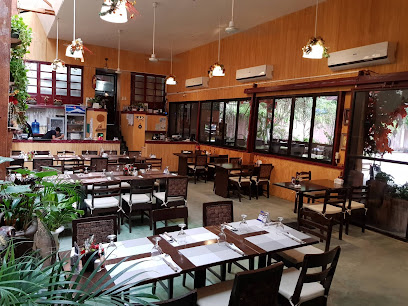
STK ta Bay!
Experience the vibrant flavors of Cebu at STK ta Bay!, where fresh seafood meets authentic Filipino hospitality.
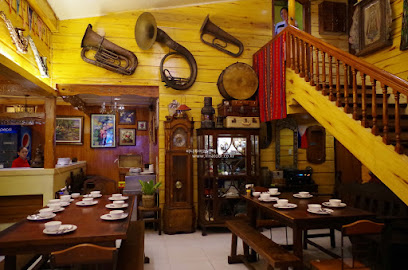
Mr. A Bar & Restaurant
Experience breathtaking views and diverse culinary delights at Mr. A Bar & Restaurant in Cebu City.
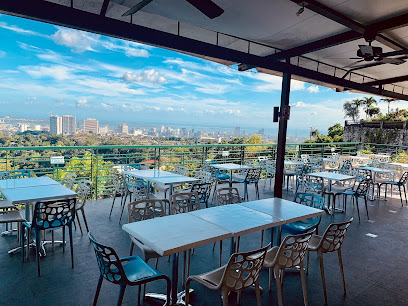
The Social
Experience the vibrant flavors of Australia at The Social in Cebu's Ayala Mall - your go-to spot for grill delights and refreshing drinks.
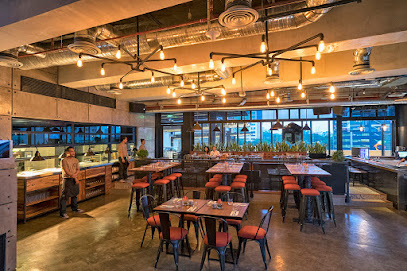
Yakski Barbecue
Experience authentic Filipino barbecue at Yakski Barbecue in Cebu City - where flavors meet tradition in every bite.
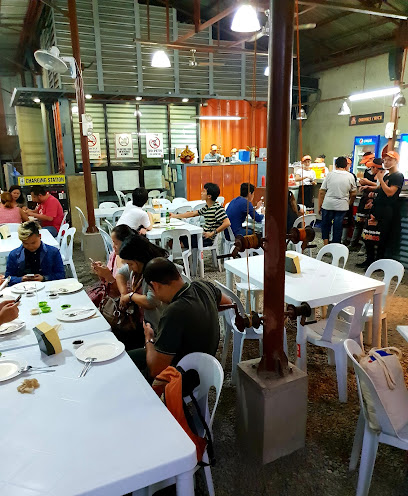
Parilya
Experience authentic Filipino flavors at Parilya in Cebu – a delightful seafood and grill restaurant with stunning coastal views.
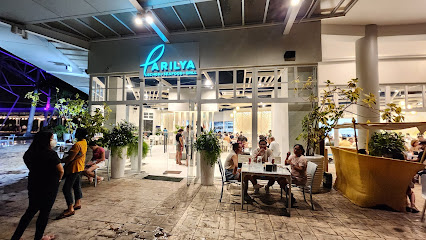
The Pig and Palm
Experience modern Filipino cuisine at The Pig and Palm, where innovative dishes meet elegant ambiance in the heart of Cebu City.
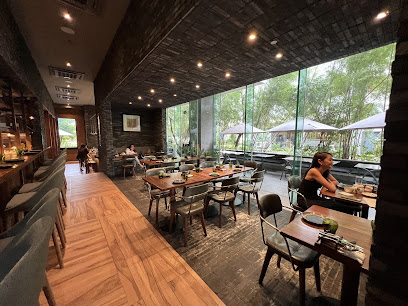
Maya Mexican Restaurant
Experience authentic Mexican cuisine in Cebu City at Maya Mexican Restaurant, where every dish tells a flavorful story.
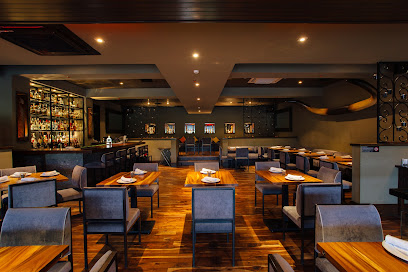
I Love Bucket Shrimps - Capitol
Experience the vibrant flavors of Cebu's freshest seafood at I Love Bucket Shrimps - Capitol; where every meal is an adventure!
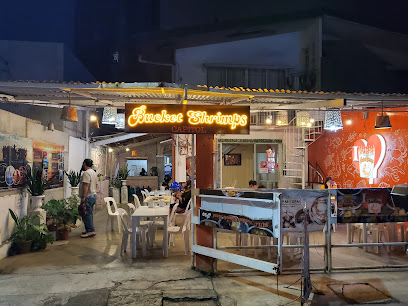
Lighthouse Restaurant
Experience authentic Filipino cuisine with stunning ocean views at The Lighthouse Restaurant in Cebu City.

Markets, malls and hidden boutiques
Ayala Center Cebu
Experience the vibrant shopping and dining scene at Ayala Center Cebu, where culture meets modernity in a premier mall destination.

SM Seaside City Cebu
Explore the ultimate shopping and entertainment experience at SM Seaside City Cebu, where modern architecture meets coastal charm.
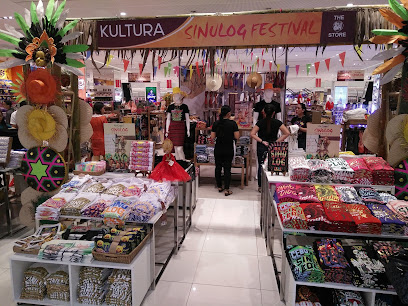
Carbon Market
Discover the charm of Carbon Market, Cebu City’s bustling marketplace filled with fresh produce, local delicacies, and vibrant culture.
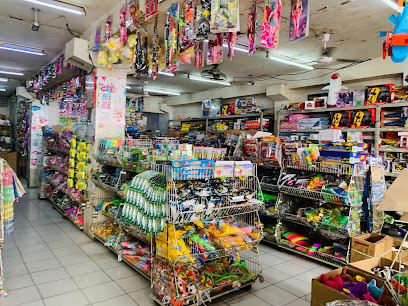
Ayala Terraces
Experience the best of shopping, dining, and entertainment at Ayala Terraces, Cebu's premier shopping destination.
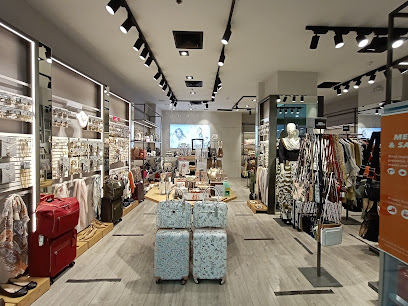
Ayala Malls Central Bloc
Discover shopping, dining, and entertainment at Ayala Malls Central Bloc in Cebu City, the heart of vibrant retail experiences.

Rustan’s
Explore luxury and style at Rustan’s in Cebu City, your ultimate shopping destination for premium brands and gourmet delights.
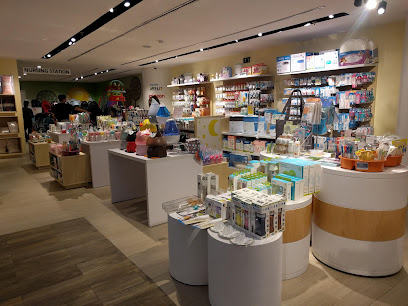
Unitop - Cebu City
Discover the vibrant shopping experience at Unitop in Cebu City, offering a wide range of quality products at affordable prices.
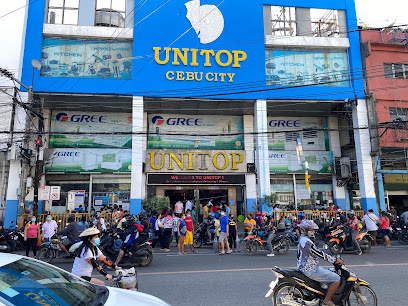
Shamrock Pasalubong Center
Experience the authentic flavors of Cebu at Shamrock Pasalubong Center, home to delicious otap and traditional Filipino treats.
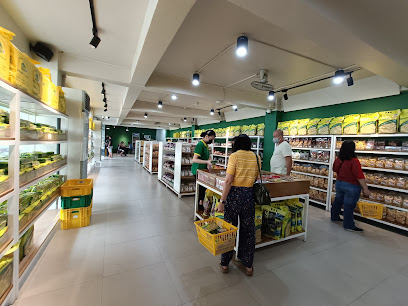
SM Store Cebu
Explore SM Store Cebu, a shopping haven offering a diverse range of products from fashion to home essentials in the heart of Cebu City.
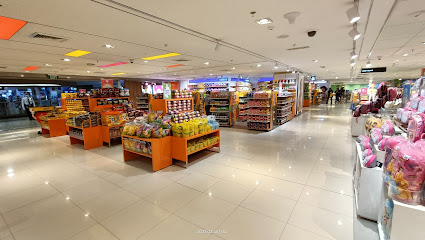
Golden FUS Shopping Mall
Explore Golden FUS Shopping Mall: A vibrant shopping and dining experience in the heart of Cebu City, where local culture meets international flair.
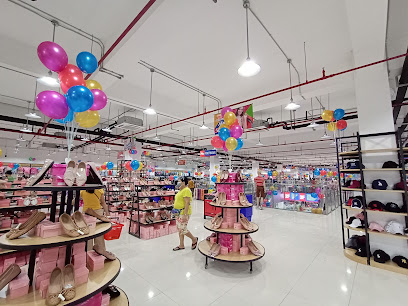
UNIQLO SM City Cebu
Shop stylish and affordable clothing at UNIQLO SM City Cebu, a must-visit destination for fashion enthusiasts in the heart of Cebu City.
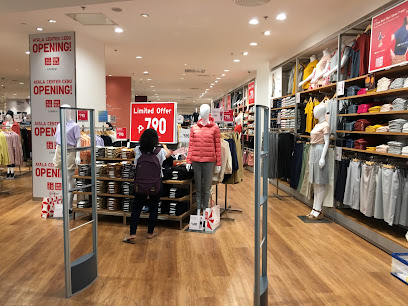
Pink Bunny Cebu - Sex Toys Shop
Explore a vibrant selection of adult products at Pink Bunny Cebu, an inviting adult entertainment store in the heart of Cebu City.
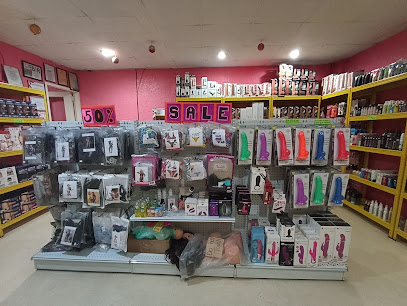
Island Souvenirs
Explore the heart of Cebu with Island Souvenirs, where every treasure tells a story of the Philippines' rich culture and artistry.
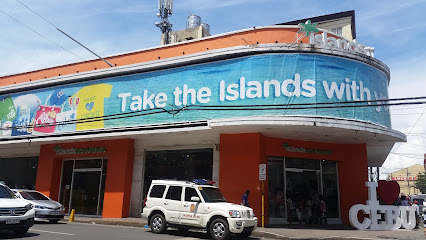
Kultura Filipino - SM City Cebu
Discover authentic Filipino souvenirs and cultural treasures at Kultura Filipino in SM City Cebu, bringing the essence of the Philippines to your home.
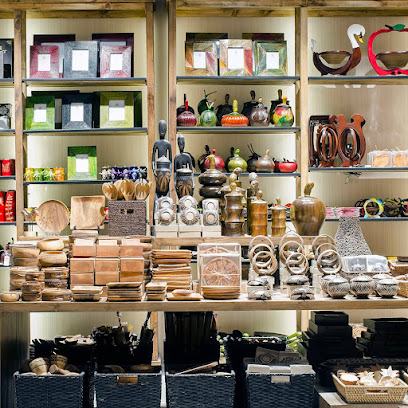
Arlene's Dress Shop
Explore unique clothing options at Arlene's Dress Shop, a charming boutique showcasing the vibrant styles of Cebu City’s local fashion scene.
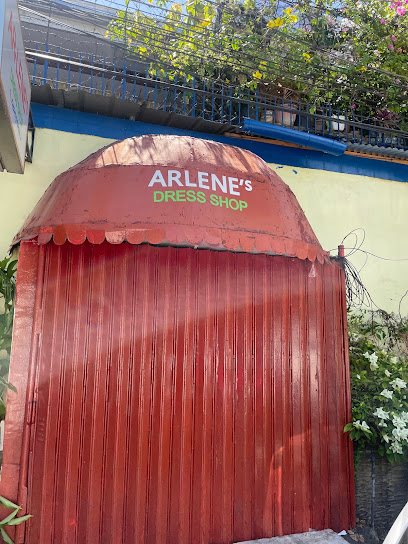
Essential bars & hidden hideouts
Cubana
Experience the vibrant nightlife of Cebu at Cubana, a live music bar where local talent and delicious drinks come together for an unforgettable evening.
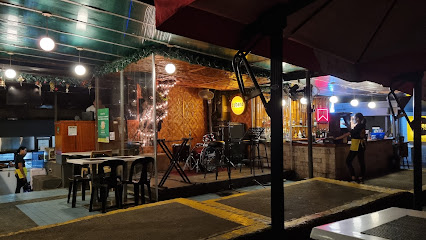
The Social
Experience a delightful blend of Australian flavors and vibrant atmosphere at The Social, a top grill and gastropub in Cebu's Ayala Mall.
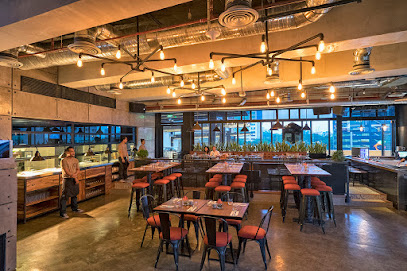
Blu Bar & Grill
Experience a delightful fusion of flavors at Blu Bar & Grill, where culinary excellence meets stunning views of Cebu City.
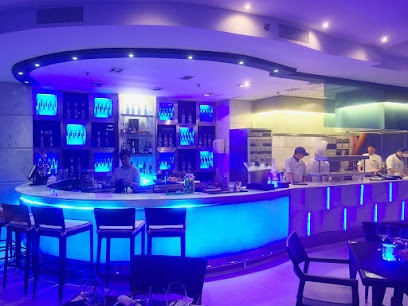
Verified Rooftop Bar & Lounge
Experience breathtaking views and expertly crafted cocktails at Cebu City's premier rooftop bar and lounge, a must-visit for every traveler.
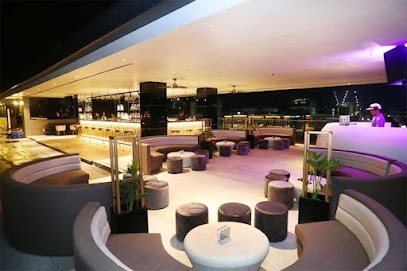
Draft Punk Craft Cafe
Experience the vibrant atmosphere of Draft Punk Craft Cafe, where craft beers and delicious food meet in the heart of Cebu City.
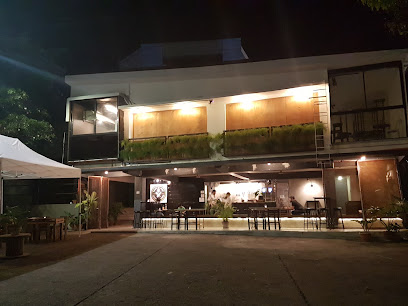
F Cafe and Bar
Discover F Cafe and Bar in Cebu City, where nostalgia meets modernity in a vibrant setting for food and drinks.
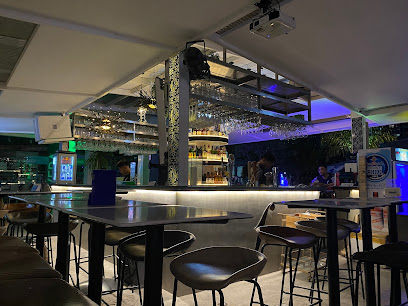
Bamboozers Bar
Experience the vibrant nightlife at Bamboozers Bar in Cebu City, featuring live piano music and a wide selection of drinks for an unforgettable night.
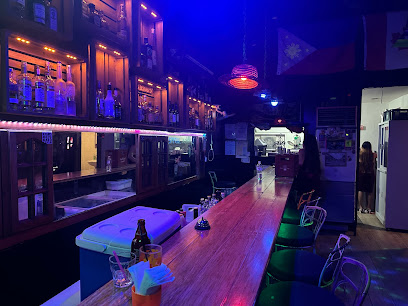
EULAX PUB
Discover the vibrant nightlife at Eulax Pub, Cebu's premier bar and lounge offering great drinks and an unforgettable social experience.
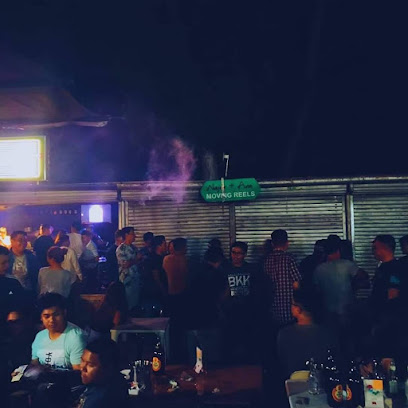
Contact Point Restobar Main
Discover the vibrant nightlife at Contact Point Restobar Main in Cebu City, where great drinks, music, and a lively atmosphere await.
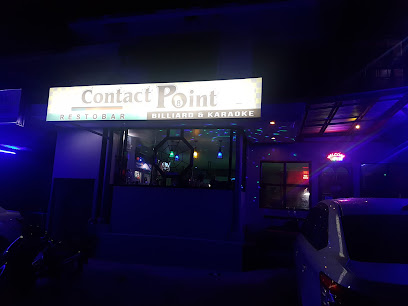
G-SPOT Bar
Experience the vibrant nightlife of Cebu at G-SPOT Bar, where great drinks, music, and unforgettable moments await.

El Gecko Resto Bar
Discover the vibrant nightlife of Cebu City at El Gecko Resto Bar, where local flavors and lively entertainment create unforgettable memories.
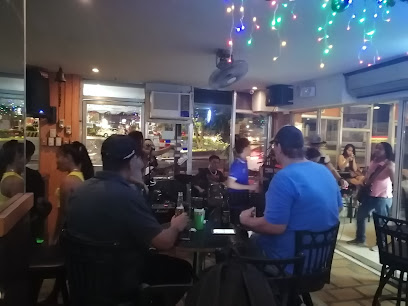
The Distillery Cebu
Discover the vibrant nightlife at The Distillery Cebu, where craft cocktails and lively music create unforgettable experiences.
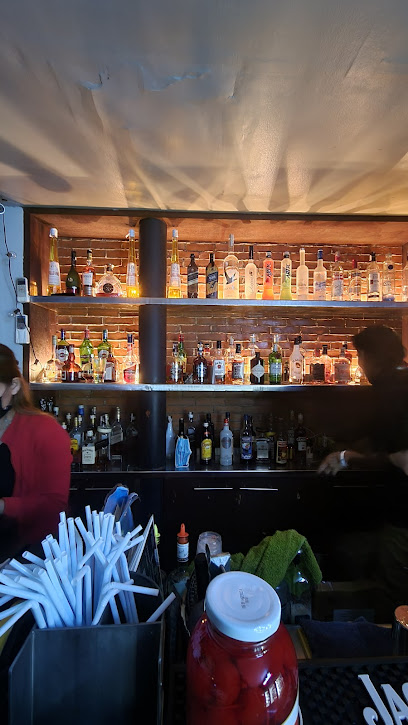
Billy's Sports Bar
Experience the lively atmosphere of Billy's Sports Bar in Cebu City, where delicious grills meet exciting sports entertainment.
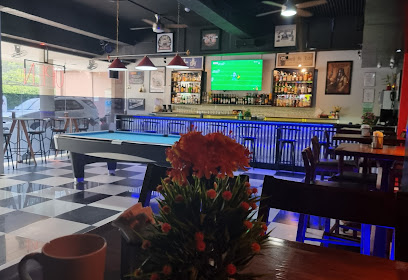
Ambiance Bar & Restaurant
Savor the best of western cuisine and crafted cocktails at Ambiance Bar & Restaurant in Cebu City's Ayala Malls.

Straight Up Rooftop Bar at Seda Central Bloc Cebu
Discover Cebu City’s nightlife at the Straight Up Rooftop Bar, where stunning views meet exquisite cocktails and a vibrant atmosphere.
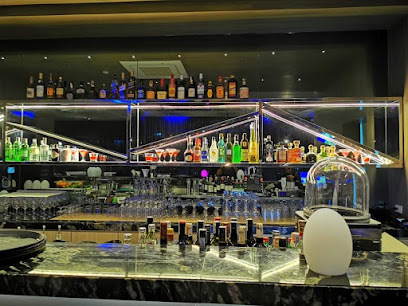
Local Phrases about Cebu
-
- HelloKumusta
[koo-moo-sta] - GoodbyePaalam
[pa-a-lam] - YesOo
[oh-oh] - NoDili
[dee-lee] - Please/You're welcomePalihug
[pa-lee-hoog] - Thank youSalamat
[sa-la-mat] - Excuse me/SorryPasayloa
[pa-sa-ylo-wa] - How are you?Kumusta ka?
[koo-moo-sta ka?] - Fine. And you?Maayo. Ikaw?
[ma-a-yo. ee-kaw?] - Do you speak English?Kahibaw ka mo-sulti og Iningles?
[ka-hee-baw ka mo-sul-tee og ee-ning-gles?] - I don't understandDili ko kasabot
[dee-lee ko ka-sa-bot]
- HelloKumusta
-
- I'd like to see the menu, pleaseGusto ko makakita sa menu, palihug
[gus-to ko ma-ka-kee-ta sa me-noo, pa-lee-hoog] - I don't eat meatDili ko mokaon ug karne
[dee-lee ko mok-a-on oog kar-ne] - Cheers!Mabuhi!
[ma-boo-hee] - I would like to pay, pleaseGusto ko mubayad, palihug
[gus-to ko moo-ba-yaad, pa-lee-hoog]
- I'd like to see the menu, pleaseGusto ko makakita sa menu, palihug
-
- Help!Tabang!
[ta-bang] - Go away!Lakaw!
[la-kaw] - Call the Police!Tawagi sa pulis!
[ta-wa-gi sa poo-lis] - Call a doctor!Tawagi sa doctor!
[ta-wa-gi sa doc-tor] - I'm lostNawala ko
[na-wa-la ko] - I'm illSakit ko
[sa-kit ko]
- Help!Tabang!
-
- I'd like to buy...Gusto ko mopamalit ug...
[gus-to ko mo-pa-ma-leet oog...] - I'm just lookingNaghulat lang ko
[nag-hoo-lat lang ko] - How much is it?Pila ni?
[pee-la nee?] - That's too expensiveMahal kaayo
[ma-hal ka-a-yo] - Can you lower the price?Pwede pababaon ang presyo?
[pwe-de pa-ba-ba-on ang pres-yo?]
- I'd like to buy...Gusto ko mopamalit ug...
-
- What time is it?Unsa oras na?
[oon-sa o-ras na?] - It's one o'clockAlas uno na
[a-las oo-no na] - Half past (10)Kalahati na sa (napulo)
[ka-la-ha-tee na sa (na-poo-lo)] - MorningBuntag
[boon-tag] - AfternoonHapon
[ha-pon] - EveningGabii
[ga-bee] - YesterdayKagahapon
[ka-ga-ha-pon] - TodayKaron
[ka-ron] - TomorrowUgma
[oog-ma] - 1Usa
[oo-sa] - 2Duha
[doo-ha] - 3Tulo
[too-lo] - 4Upat
[oo-pat] - 5Lima
[lee-ma] - 6Unom
[oo-nom] - 7Pito
[pee-to] - 8Walo
[wa-lo] - 9Siyam
[see-yam] - 10Napulo
[na-poo-lo]
- What time is it?Unsa oras na?
-
- Where's a/the...?Asa ang...?
[a-sa ang...?] - What's the address?Unsa ang address?
[oon-sa ang address?] - Can you show me (on the map)?Pwede mo-ipakita nako (sa mapa)?
[pwe-de mo-ee-pa-kee-ta na-ko (sa ma-pa)?] - When's the next (bus)?Unsa oras ang sunod (bus)?
[oon-sa o-ras ang soo-nod (bus)?] - A ticket (to ....)Bilhete (paingon sa ....)
[beel-he-te (pa-een-gon sa ....)]
- Where's a/the...?Asa ang...?
History of Cebu
-
In 1521, Portuguese explorer Ferdinand Magellan, sailing under the Spanish flag, arrived in Cebu. This event marked the beginning of Spanish influence in the Philippines. Magellan's arrival led to the first contact between Europeans and the island's local rulers, particularly Rajah Humabon. The famous planting of the cross, now known as Magellan’s Cross, symbolizes the introduction of Christianity in the Philippines.
-
On April 27, 1521, one of the most significant historical events in Cebu took place: the Battle of Mactan. Lapu-Lapu, a local chieftain, resisted Magellan's attempts to colonize Mactan Island and convert its inhabitants to Christianity. The battle ended with the death of Magellan, marking a significant victory for the local warriors and a symbol of resistance against foreign invaders.
-
In 1565, Spanish conquistador Miguel López de Legazpi arrived in Cebu and established the first Spanish settlement in the Philippines. This event marked the beginning of Spanish colonial rule in the archipelago. Legazpi's fort, Fuerza de San Pedro, was constructed to defend the new settlement and remains a historic site in Cebu City.
-
The Santo Niño de Cebu is a revered religious icon gifted by Magellan to Rajah Humabon and Queen Juana during their baptism in 1521. After the initial settlement by the Spanish, the image was found intact amid ruins, and it became a symbol of Cebuano faith and resilience. The annual Sinulog Festival celebrates the Santo Niño, attracting millions of devotees and tourists every January.
-
During World War II, Cebu was occupied by Japanese forces from 1942 to 1945. The period was marked by significant hardship and resistance from the local population. The guerilla movement played a crucial role in undermining the Japanese occupation, and the eventual liberation by Allied forces marked a poignant chapter in Cebu’s history.
-
After World War II, Cebu underwent rapid development, transforming from a war-torn province into a bustling urban center. The post-war era saw significant economic growth, infrastructure development, and a booming tourism industry. Today, Cebu is known as the 'Queen City of the South,' blending its rich historical heritage with modernity.
Cebu Essentials
-
Cebu is one of the most accessible islands in the Philippines. The main entry point is the Mactan-Cebu International Airport (MCIA), which serves both domestic and international flights. Major airlines such as Philippine Airlines, Cebu Pacific, and AirAsia operate regular flights to Cebu from various domestic and international locations. From Manila, the flight to Cebu takes about one hour, while international flights vary. For those traveling by sea, Cebu City is a major hub with multiple ferries and fast craft services connecting it to other islands in the Philippines.
-
Cebu offers a variety of transportation options. Jeepneys are the most popular and economical mode of public transport, offering routes throughout Cebu City and neighboring areas. Taxis are also widely available and affordable. For a more private experience, ride-hailing services like Grab operate in Cebu. If you prefer to drive, car rental services are available at the airport and in the city. For inter-island travel, ferries and fast crafts connect Cebu to nearby islands such as Bohol, Leyte, and Negros.
-
The official currency in Cebu is the Philippine Peso (PHP). While major establishments accept credit and debit cards, it's advisable to carry cash for transactions in smaller shops, local markets, and remote areas. ATMs are plentiful in Cebu City but may be less accessible in rural areas. Currency exchange services are available at the airport, major hotels, and shopping malls.
-
Cebu is generally a safe destination for tourists, but like any other place, it is important to take standard precautions. Avoid displaying valuables and be cautious in crowded areas to prevent pickpocketing. Areas like Colon Street and some parts of downtown Cebu City have higher crime rates, so it's advisable to avoid these areas, especially at night. Always stay vigilant and aware of your surroundings.
-
In case of an emergency, dial 911 for police, fire, or medical assistance. Major hospitals in Cebu City, such as Chong Hua Hospital and Cebu Doctors' University Hospital, offer comprehensive medical services. Pharmacies are widely available for minor health concerns. It is recommended to have travel insurance that covers medical emergencies. For consular assistance, tourists should contact their respective embassies or consulates in Manila.
-
Fashion: Do dress comfortably but modestly, especially when visiting religious sites. Avoid wearing overly revealing clothing. Religion: Do respect local customs and traditions. When visiting churches or religious sites, wear appropriate attire and remain quiet. Public Transport: Do be patient and courteous when using public transportation. Don’t eat or drink on jeepneys or buses. Greetings: Do greet people with a smile and a slight nod. A handshake is also appropriate in formal settings. Eating & Drinking: Do try local delicacies and be open to new flavors. Don’t refuse food or drink offered by locals as it can be seen as impolite.
-
To experience Cebu like a local, visit the Carbon Market for fresh produce and local goods. Try the local street food such as 'puso' (hanging rice) and 'lechon' (roast pig). Participate in local festivals like the Sinulog Festival, which takes place every January. For a unique experience, visit the less touristy areas like the mountain barangays where you can enjoy scenic views and interact with friendly locals.
Trending Landmarks in Cebu
-
Magellan's Cross
-
Temple of Leah
-
Minor Basilica of the Holy Child of Cebu (Basilica Minore Del Sto. Niño de Cebu)
-
Fort San Pedro
-
TOPS Cebu
-
Sirao Garden
-
Yap-San Diego Ancestral House
-
Plaza Independencia
-
Casa Gorordo Museum
-
Cebu Provincial Museum
-
Heritage of Cebu Monument
-
National Museum of the Philippines - Cebu
-
Cebu Provincial Capitol
-
Colon Obelisk
-
Miguel López de Legazpi Monument
Nearby Cities to Cebu
-
Things To Do in Bohol
-
Things To Do in Camiguin
-
Things To Do in Cagayan de Oro
-
Things To Do in Siargao
-
Things To Do in Boracay
-
Things To Do in Legazpi
-
Things To Do in Davao City
-
Things To Do in Zamboanga City
-
Things To Do in Tagaytay
-
Things To Do in Puerto Princesa
-
Things To Do in Manila
-
Things To Do in Palawan
-
Things To Do in Angeles City
-
Things To Do in Subic
-
Things To Do in Baguio













